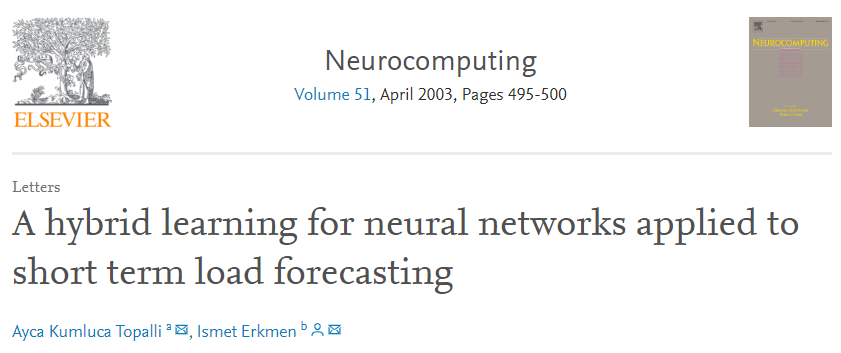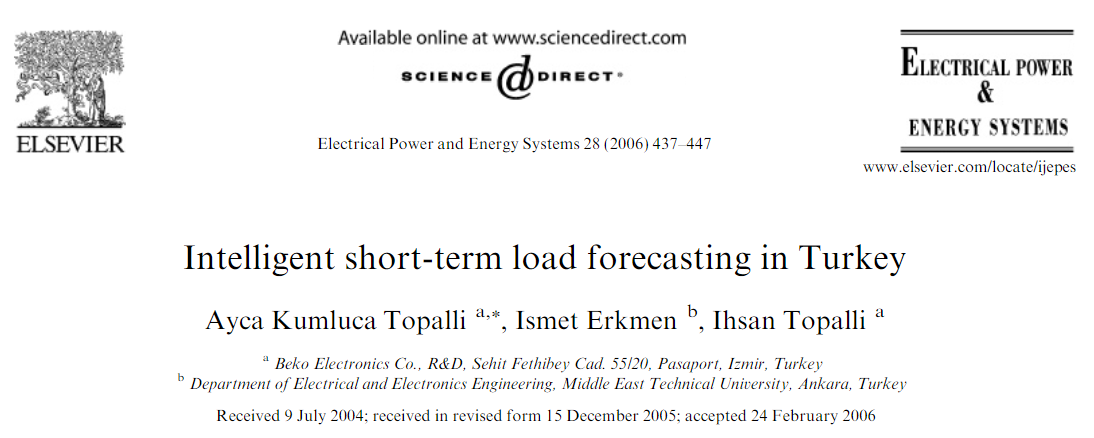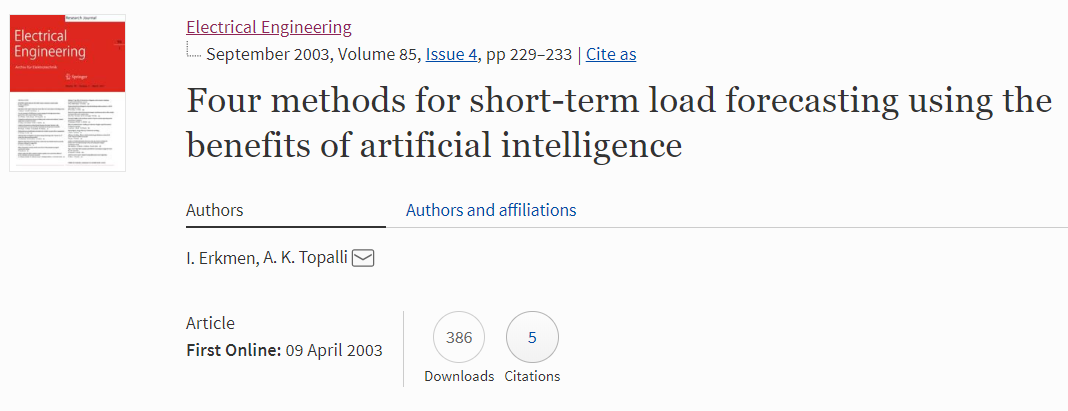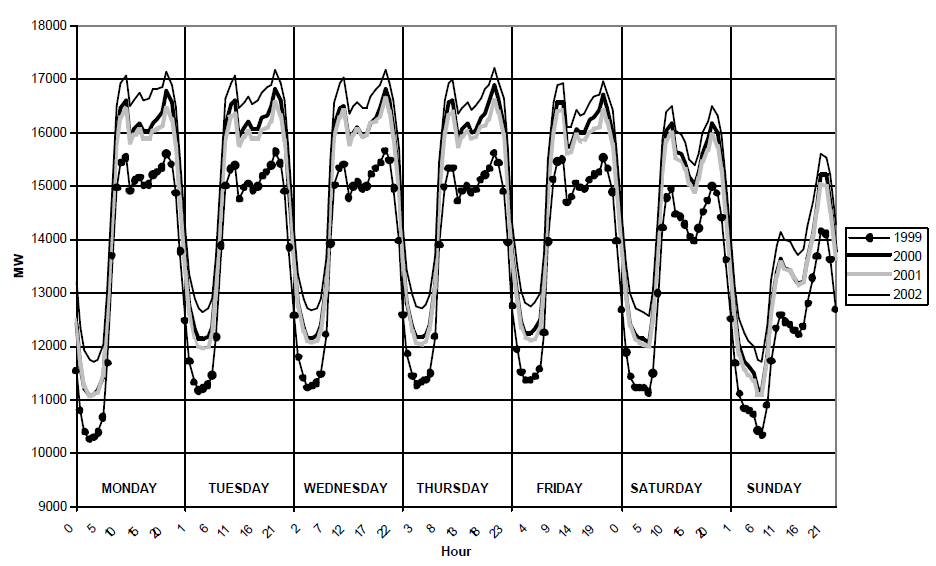Short Term Electric Load Forecasting by Neural Networks
Fortune says "Google’s DeepMind AI program can predict wind power output 36 hours before the turbines start spinning, allowing one to make delivery commitments to the power grid up to a day in advance." (Ref: http://fortune.com/2019/02/27/deepmind-wind-power-predictions/ on 27 Feb 2019)
This reminds us our work from more than 15 years ago, published in journals like Neurocomputing, Electrical Power & Energy Systems, and Electrical Engineering. It was about forecasting Turkey's total electric load by neural networks. Quite successful it was, and apparently, ahead of its time :)
 |
 |
 |
Please see below for the details.
Abstract
Short-term load forecasting (STLF) is one of the important parts of the power generation process. For years, it has been achieved by traditional approaches like stochastic time series; but, new methods based on artificial intelligence emerged in the literature and started to replace the old ones in the industry. In order to follow the latest developments and to have a modern system best suited to local trends, it is aimed to make a research on STLF in Turkey, by an intelligent approach. For this purpose, a method is proposed to forecast Turkey’s total electric load one day in advance with recurrent neural networks. A hybrid learning scheme that combines off-line learning with real-time forecasting is developed to make use of the available past data for adapting the weights and to further adjust these connections according to the changing conditions. It is also suggested for the real-time forecast phase to tune the step size iteratively for better accuracy. Since a single neural network model cannot cover all the load types , data are closely examined and clustered due to the differences in their characteristics. Apart from this, special days that have irregular load profiles are extracted from the normal training sets and handled separately. In this way, a solution is proposed for all the load types, including working days, weekends and the special holidays. A traditional model is constructed for the same data as a benchmark and results are compared. The proposed method gives lower percent errors all the time, especially for holiday loads.
Turkey’s Electric Load Profile
The load profile is dynamic in nature. A broad spectrum of factors such as temporal, seasonal and annual variations affects the load level. In addition, total system load is subjected to random disturbances caused by sudden increase of large loads or outages.
Figure below shows hourly load averages for each day of the week from years 1999 to 2002.

Proposed Model
A model is proposed here to forecast Turkey's total electric load one day in advance by the artificial intelligence approach. This model uses Elman type recurrent neural networks and provides a hybrid learning, which combines both off-line and real-time trainings. The aim is to prepare the model for real-time forecasts by training it with the available past data. Therefore, the hourly load data of a year (1999, 2000 or 2001) are used in off-line learning to adjust randomly initialized synaptic weights, and then the model undergoes real-time learning with the data of the next year (2000, 2001 or 2002, respectively). The next year's data are used as if they were real-time data by feeding them to the network in time order and only once. Errors are calculated as the actual data become available and weights are further updated in this phase.
Step size is adjusted in each real-time iteration by looking at the error gradient for improving the adaptation of the network.
In order to prevent model from over-fitting and memorizing the data in the offline learning, the data are divided into training and validation sets. After randomizing the weights, input/output pairs from the training set are randomly presented for a predetermined number of cycles, which is taken as 1,000,000 here. Error is back-propagated and weights are adjusted in each cycle. At the end of each 100,000 cycle, weights are stored and the model is tested with the validation set, formed by 10% of the off-line data, chosen randomly and never given to the neural network during the off-line training. In this way, there are 10 validation errors and corresponding 10 weight sets when the off-line learning is finished. Weights giving the minimum validation error are considered as the final off-line weights.
Results
Percent errors for the weekdays:

Summary of the forecast errors by the proposed model:
| Cluster | 2000 | 2001 | 2002 |
| Early Monday | 2.29% | 1.89% | 1.97% |
| Weekday | 1.52% | 1.45% | 1.39% |
| Saturday | 2.01% | 1.68% | 1.47% |
| Sunday | 2.02% | 1.85% | 1.99% |
| Weighted Average | 1.69% | 1.56% | 1.51% |
These results verify that all the building blocks of this work mentioned above contribute positively to the solution of the STLF problem.
Please contact us for the details if you are interested in hearing more about this.